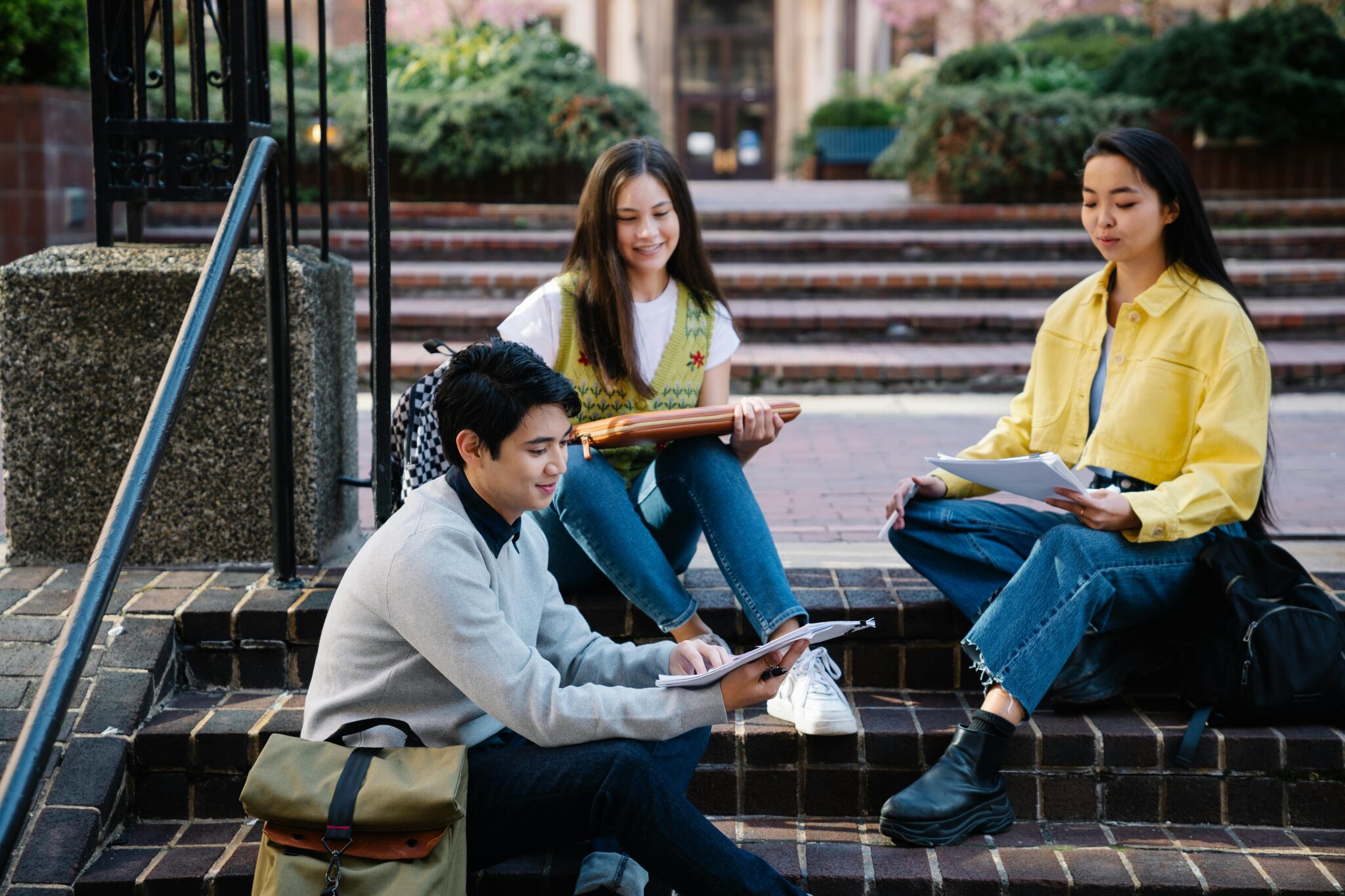By Kate Williams
When it comes to making major life decisions, like where to study or whether to take a job, who do you turn to for advice? Friends, family and colleagues, or faceless institutions?
Of course you trust people you know more; it’s only natural. And you’re not alone: 88% of people trust recommendations from people they know more than any other channel.
The same goes for your prospective students. Sure they’re looking at your college’s prospectus and website, but they’re also checking you out on social media. And not just on your official channels. They’re also chatting to current students and alumni to get the info they need to make decisions about where to study.
If you think this is something you have no control over, think again. Marketing is constantly evolving, and one of the most intriguing recent developments in social media for higher education is the rise of nano-influencers. These are people with modest yet highly engaged followings on social media. And they are revolutionising higher education social media strategy – and how schools and universities connect to their audiences.
In this post, we’ll look at what a nano-influencer is, the benefits of working with them and how you can set up successful nano-influencer collaborations in your university or institution.
Let’s dive in.
What is a nano-influencer?
A nano-influencer is a relatively new breed of influencer with a small but highly engaged following of around 1000 people within their community. For example, in their local area or among friends, classmates or peers in the student world. Nano-influencers aren’t usually celebrities of well-known names, but rather everyday digital creators with an affinity for social media.
Definitions of influencer tiers and follower numbers vary, but to give you a rough idea:
| Influencer tier | Average follower numbers |
| Mega influencer | 1 Million+ |
| Macro influencer | 100,000 – 1 Million |
| Micro influencer | 1,000 – 100,000 |
| Nano influencer | 1,000+ |
Each tier has a different level of influence, reach, engagement rate and capacity to create content.
What is an influencer marketing campaign?
A nano-influencer campaign is an approach that involves leveraging the influence of current and former students to promote your institution on social media to their followers. It relies on peer-to-peer marketing and the skills of Gen Z influencers who are adept at navigating the online world and creating compelling content. This can make nano-influencer campaigns highly effective and targeted.
Why should you consider nano-influencer campaigns
After our team spoke to a number of students at the PIE round table in Boston and in London, and looked at the data, it’s clear that when students make decisions about education, they don’t do it in a vacuum: Students are strongly influenced by other students and want to hear from them.
That means there are significant benefits to be gained from marrying social media and higher education by working with student nano-influencers. Here are just a few of them:
Small, but highly focused audience: Nano-influencers may not have the huge following of a celebrity, but their smaller, highly specific audience makes them ideal for marketing campaigns with niche appeal, like your courses.
High engagement: Nano-influencers working with commercial brands typically achieve higher engagement rates than other types of influencer across all platforms, averaging 4.39%.
Relevance: Student nano-influencers know things your marketing department doesn’t. For example, what it’s like to live on campus or in your city, local nightlife, etc. This insider knowledge is invaluable to create a comprehensive, realistic portrayal of campus life that prospective students will value.
Trust: Real students that love your institution make the best advocates. Their stories and user generated content can connect better than the slickest ad, particularly with Gen Z, who are increasingly sceptical of marketing tactics like slick branding and celebrity influencers. Nano-influencers are the same demographic as your target audience. This means they’re more likely to provide honest, accurate information about their experiences, which helps build trust.
Authenticity: Marketers now prize authenticity over follower count and nano-influencers have that in spades. They speak your target market’s language and may even have a real-life connection to their followers.
As well as boosting their authenticity, this makes them more approachable and relatable than influencers with large followings. They also aren’t professional influencers, so they tend to produce the kind of ‘low-fi’ content that today’s savvy audiences are more attracted to. Their posts come across more like a recommendation from a trusted friend than a slick, overproduced ad.
Inclusive: People look for people like them when making decisions about where to work, study, etc. So having students from diverse backgrounds among your nano-influencers can help you connect with a broader range of potential students who see themselves reflected in your institution.
Cost-effective: Because nano-influencers aren’t getting paid big bucks – if at all – they’re often more open to collaboration, making them a cost-effective choice for niche marketing campaigns. Even if you do provide some kind of incentive you’re likely to enjoy a significant ROI on the investment as nano-influencers can provide higher engagement than you’d get with other tiers.
What are the challenges of nano-influencer marketing in higher education?
Of course, executing any marketing strategy comes with challenges. Here are some things to be aware of when working with nano influencers:
This isn’t traditional marketing: Influencer campaigns are a whole different ballgame to traditional marketing tactics, particularly in higher education. Here, polish and professionalism are often prioritised, but they can take the edge off that all-important authenticity and can be a barrier to social media success.
Avoid the temptation to stamp your branding on everything; official fonts, colours, crests, etc. should take a back seat to authenticity and relatability and you’ll need to trust that messages will hit home even if they aren’t highly polished.
You may need to expand into new, unfamiliar channels: Students aren’t on LinkedIn; they’re using Snapchat, TikTok, Instagram, Pinterest and YouTube. These may be unfamiliar territory for higher education institutions, so you may experience a learning curve and feel out of your depth.
You have to relinquish control: This isn’t so much another marketing campaign as the development of a whole new brand voice – led by your student body. You can set guidelines but you won’t have full control over messaging and delivery. It’s important to avoid the temptation to micromanage and be heavy handed as this can stifle influencers’ authenticity and creativity.
How to create a successful influencer marketing campaign
If you’re new to nano-influencer marketing, it’s important to do your homework and create a clear pathway for students and alumni to engage in this kind of activity. It should be fun and valuable for them, not a chore.
Here are some steps to follow:
1. Define your objectives
Your first step should be to define your campaign goals: Are you looking to grow your brand’s visibility, boost enrolment or enhance student engagement?
Once you know that, determine how you’ll measure success against these objectives and decide which metrics to track. It’s important here not to be misled by things like follower count when assessing the performance of your campaigns. Engagement is a much more reliable metric of how well an influencer’s content resonates with their audience. And, therefore, the impact it has.
2. Research potential influencers
Since you’ll be trusting them with your campaign, it’s important to choose your influencers carefully. Start by searching through your records and institutional social media to identify student leaders, ambassadors, recent graduates, and high-performers in any discipline.
Use relevant hashtags and suggested follows to find people, prioritising those who have already posted positively about your institution. If you’re promoting a specific course, look for influencers among current or former students in that discipline as they’ll be best placed to inspire others.
You should also check which type of account influencers have as this will tell you what they are able to do. For example, they’ll need a Creator account on Instagram if you want to access in-depth insights to analyse campaign performance.
Once you’ve identified some candidates, do a thorough background check. Take the time to dig through several pages of Google results and past posts on their feeds. This will help you assess their follower numbers and the type of content they post. It should also reveal any potential red flags, like controversial content, radicalism or views that aren’t aligned with your values.
3. Build student mentorship, advocacy and ambassador programmes
Engaging students in activities like mentorship, student advocacy, ambassadorship or leadership roles can help foster a sense of ownership and engagement. It also provides experience in communicating about your institution and the kind of firsthand, in-depth experience that’ll be valuable for prospective students. All of which will help social media messages ring true.
Promote your programs through campus job boards, student organisations, and social media. You can also organise competitions, clubs, student unions and careers fairs, which all help boost student participation and engagement. Look for students who are outgoing, well-connected, and enthusiastic about your institution and their studies. Then, conduct a thorough interview and vetting process to assess communication skills and fit.
You should also provide training and support, educating your participants on your brand, messaging and expectations. Also, give them the resources, tools, and guidance they need to represent you.
Note that there’s a difference between student influencers and ambassadors in that influencers are more in control of their brand. By contrast, ambassadors are more likely to deliver approved messages, which can make them less authentic. So if they’re moving into being an influencer, you’ll want to let them have more free reign (more on this later).
4. Consider offering incentives for participation
Nano-influencers should be paid for their time. Some brands that work with nano-influencers also offer incentives like free products, exclusive experiences, etc.
If you want to do the same, things to consider include rewards like scholarships, internships, merchandise or perks. For example, a meet-the-professor ticket to a science fair. You can also recognise top-performing representatives and influencers with awards or shout-outs on your communication channels.
Note that your nano influencers should also make it clear that they are being remunerated or sponsored by your institution, or your campaign messaging could come across as dishonest.
5. Set guidelines and agree on topics of interest
Once you’ve got some engaged influencers who are keen to promote your institution, set guidelines around what you expect them to deliver. For example, establish things like the number of posts, length, content type, frequency, hashtags to use and people to tag, etc.
Next, agree on some topics of interest. For example, overseas students might want to post about their experiences. Others may enjoy sharing insights into what’s involved in their courses and classes. Other ideas include freshman packing lists, the lowdown on clubs to join, guides to student accommodation or how to navigate the application process.
You can also set guidelines around how to communicate certain messages, but take care not to stifle them. Influencer content should be delivered in their own words and tone of voice so it feels fresh, authentic and real.
Try to find a middle ground where you provide structure while still allowing lots of creative freedom. Of course, you want to be clear about avoiding any controversial statements, personal attacks on anyone or anything that could cause offence to certain groups.
Finally, discuss content types. Video continues to grow in popularity, with 40% of marketers saying it delivers the highest ROI. That means it’s well worth working with creators to produce short videos that will resonate with your audience.
6. Organise takeovers
Now, it’s time to let your influencers loose. A takeover of your institution’s accounts is a great way to kick off your campaign and reach a wider audience. Give influencers access to post on your channels, sharing experiences and tips and encouraging engagement. In this way, they can help grow your follower numbers and impact.
Student nano-influencers: unlock the power of peer-to-peer marketing
So there you have it: student nano-influencers can be worth their weight in gold for higher education social media strategies. Students and alumni offer a wealth of real-world, relatable experience that prospective students want to know about. While nano-influencers have smaller followings than micro- or macro influencers, their audience is usually highly engaged, meaning your campaigns are more likely to hit home.
With their genuine connections and authentic voices, nano-influencers can bridge the gap between your institution and prospective students. By leveraging their trusted insights and engaging content, you can tap into the power of peer influence, building trust and fostering a sense of community around your institution.






